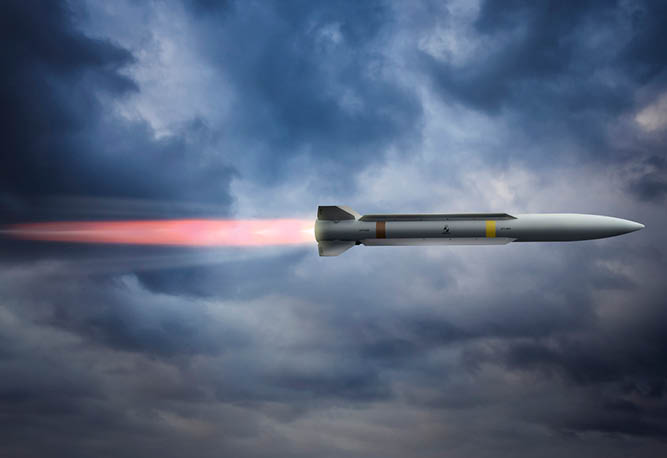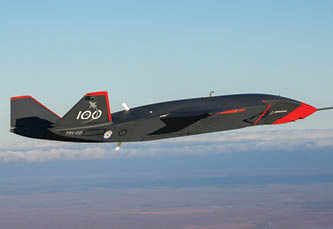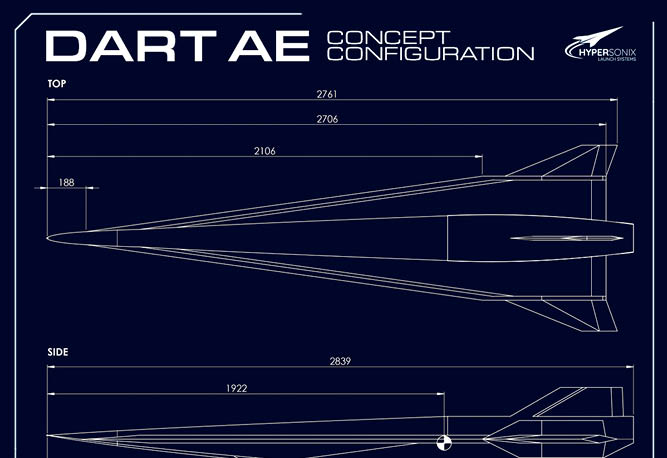The future of Australia’s air combat capability is being realised in a joint venture between the US Defense Department and the Australian Defence Force. The Southern Cross Integrated Flight Research Experiment (SCIFiRE) program is aimed at maturing “a solid-rocket boosted, air-breathing, hypersonic conventional cruise missile, air-launched from existing fighter/bomber aircraft, through to completion of a preliminary design review,” according to a recent US Defense contract announcement.
Based on more than 15 years of collaboration between the US and Australia on science and technology research into hypersonic scramjets, rocket motors, sensors, and advanced manufacturing materials, the SCIFiRE program is the product of a joint collaboration which commenced in 2007. This was known as the Hypersonic International Flight Research Experimentation (HIFiRE) program, which aimed to develop baseline hypersonic technologies. The most recent HIFiRE test, successfully conducted in July 2017, explored the flight dynamics of a Mach 8 hypersonic glide vehicle, while previous tests explored scramjet engine technologies.
This program aims to realise a number of future focussed capabilities for the Royal Australian Air Force. One of these capabilities could be a Mach 5-class precision strike missile, propulsion-launched and powered by an air-breathing scramjet engine. This could complement and synchronise with various aircraft platforms including the F/A-18F Super Hornet, EA-18G Growler and F-35A Lightning II, as well as the P-8A Poseidon maritime surveillance aircraft.
Chief of Air Force, Air Chief Marshal Mel Hupfeld said “The SCIFiRE initiative is another opportunity to advance the capabilities in our Air Combat Capability Program to support joint force effects to advance Australia’s security and prosperity. Working with our Defence scientists here in Australia and our partners in the US Air Force and across the US Department of Defense on leading edge capabilities brings out the best in our Air Force team.”
SCIFiRE is aimed at furthering air-breathing hypersonic technologies, with demonstration tests expected by the mid -2020s. A key advantage for the US Defense Department working with its Australian counterparts is the Woomera Test Range located in South Australia – one of the largest weapons test facilities in the world. The US Congressional Research Service said “Australia reportedly operates seven hypersonic wind tunnels and is capable of testing speeds of up to Mach 30.”
The US Defense Department recently took a step forward with the Australian and US SCIFiRE Hypersonic cruise missile program awarding contracts to Boeing, Lockheed Martin and Raytheon. Lockheed Martin and Raytheon Technologies are working on advanced air vehicle configurations that will have a hydrocarbon scramjet-powered propulsion and thermal management system for sustained hypersonic flight during the first free-flight tests. Work under these contracts is expected to be completed by August 2022.
The joint program between Australia and the US aims to leverage new and existing frameworks for international cooperation in research and development, so the US and its close allies can co-develop prototypes to advance military superiority. The goal is to rapidly develop high-impact, game-changing, large-scale operational prototypes and explore opportunities to energize industrial bases within the US and among its allies.
According to a US report, SCIFiRE intends to “demonstrate an operational hypersonic cruise missile through two to four flight tests,” with the effort being viewed by the US Air Force as a bridge between the Hypersonic Air-breathing Weapon Concept (HAWC) project. The project’s goal is to build a hypersonic cruise missile that breathes air to feed its engine. This would allow the weapon to be launched at a low altitude and closer to the target, and would produce a more manoeuvrable missile that would be harder to detect.
US Acting Under Secretary of Defense for Research and Engineering, Michael Kratsios said, “SCIFiRE is a true testament to the enduring friendship and strong partnership between the United States and Australia. This initiative will be essential to the future of hypersonic research and development, ensuring the US and our allies lead the world in the advancement of this transformational warfighting capability.”
Last year, China showcased what it claimed was a hypersonic missile at a military parade, while Russia boasted it had deployed nuclear-tipped hypersonic missiles capable of flying at 27 times the speed of sound. India’s Defense Research and Development Organisation successfully test-fired a Hypersonic Technology Demonstrator Vehicle, joining the elite hypersonic club. These tests also laid the foundation for development of a hypersonic cruise missile system in the future, which would be a significant addition to India’s military might.
Hypersonic cruise missiles would be smaller than standard boost-glide systems that use conventional rocket boosters to accelerate the weapon to Mach 5-plus, after which the glide body containing the warhead detaches from the booster and coasts, skipping along the upper limits of the atmosphere like a stone across a pond.
Being able to fly at over five times the speed of sound, hypersonic missiles and aircraft would literally be able to outrun conventional weapons. They would also allow only a very small window of time for targeting systems to lock onto them and would have so much momentum some wouldn’t even need explosives to destroy their targets.
Hypersonic weapons are widely regarded as the future of warfare because they offer little warning time and are almost impossible to intercept by missile shields – like trying to hit a bullet with a bullet.
The management of these initiatives and other strategic capability acquisition options form part of a new and enhanced trilateral security partnership between Australia, the United Kingdom and United States (AUKUS). Under this collaboration, there are also options to identify other key priority areas such as cyber, AI and quantum. This will enhance Australia’s ability to deter and respond to potential security challenges to the nation and region.
On The Drawing Board
Additional to the SCIFIRE Program, Australia plans to acquire long-range strike capabilities to enhance the ADF’s ability to accurately deliver strike effects across air, land and maritime domains.
These include:
- Tomahawk Cruise Missiles, to be acquired on Hobart class destroyers, enabling maritime assets to strike land targets at greater distances, with better precision.
- Joint Air-to-Surface Standoff Missiles (Extended Range) will enable F/A-18 A/B Hornets and in future, F-35A Lightning II, to hit targets at a range of 900km.
- Long-Range Anti-Ship Missiles (Extended Range) (LRASM) for the F/A-18F Super Hornet.
- Precision strike guided missiles for land forces, which are capable of destroying, neutralising and supressing diverse targets from over 400km.
- Accelerating $1 billion for a sovereign guided weapons manufacturing enterprise – which will enable weapons production on Australian soil.















